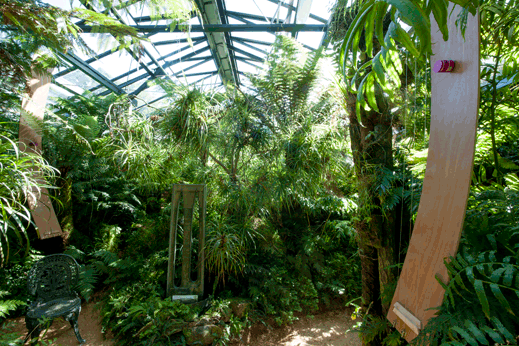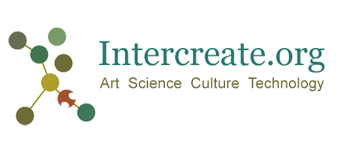Intercreate Media Art Projects (MAP2014)
Introduction
Intercreate is commissioning two innovative art works to be realised in 2014. Funded by Creative New Zealand under the Kahikatea programme, the project has the support of the Govett-Brewster Art Gallery, the Festival of Lights, Pukekura Park botanic garden and several local organisations.
The Media Art Projects aim to inspire artists and creative teams to think boldly about combinations of cultural ideas and contemporary media technologies, that could be implemented in public space and/or Pukekura Park. These projects are likely to involve working with local groups.
Artists are asked how they might explore one (or more) of four topical territories, using today’s array of networked, scientific and other media – and in such a way as to engage as wide as possible public.
These projects are open to Aotearoa New Zealand artists here and abroad. There is however, no provision for international airfares. New Zealand born collaborators working off shore are viewed positively.
Values
We seek project proposals that respond to our core values. It is not necessary for projects to address all four of the values below, but they must address items 1 and 2, while 3 and 4 are optional.
1. Working with community groups and/or individuals
People putting forward proposals should identify a community group or person they would like to work with. This can be drawn from the list below, or groups or individuals can be proposed.
2. Media art
Projects need to engage with contemporary digital or electronic media in some demonstrable way.
3. Engaging with tangata whenua
Many Intercreate projects involve discussion and collaboration with tangata whenua.
4. Environment
Recognising our relationship to the environment. This is in a conceptual range from cultural understanding and scientific viewpoints to indigenous views, and hybridisations of these.
Topics
A. Cosmological context
The big picture – Te Taiao Maori, physics, astronomy, geology, chemistry and ideas of energy.
B. Complexity
An invitation to explore the chaos, complexity and the interconnectivity of our world, as seen in biological and cultural adaptation, for example.
C. Modernity
The third topic area is our contemporary context – exploring our day-to-day environment which is underpinned by international financial trading transactions, and satellites using atomic clocks to triangulate our position within metres. What are the psycho-social symptoms of our times and technology? What are the holes, quirks, confluences to exploit that might reveal these to us?
D. Identity
Identity forms the fourth topic area – our age of managing multiple online ‘profiles’ paralleled by on-site identities; hybridising cultures that merge knowledge and tradition; and data from our increasingly online social habits, accumulated and traded.
Community engagement
It is intended that artists will work with local groups and/or individuals in the process of their project. Following is a list of of groups and people with whom Intercreate has worked before, or contacted in regard to the Media Art projects. These give an idea of the kinds of groups envisaged to be involved. If any group or person wishes to involve those on the list below, please contact us so that we can establish links.
Artists are also welcome to suggest people and organisations of their own selection, and may wish to involve organisations or individuals in their own area if they reside outside of New Plymouth.
Feedback from suggested organisations will be sought as part of the selection process.
Nga Motu Marine Reserve Society
Friends of the Waitara River
Hive Environmental Centre
Taranaki Enviroschools programme (which is co-ordinated by Hive)
A class of gifted students from a local intermediate school
Pukekura Park botanic garden staff and environment
Andrew Hornblow (custom electronics specialist)
Locations
One project location is open, a second project has a specified location.
The open project could be any public space in New Plymouth – Pukekura Park, the walk way, potentially the landing at Puke Ariki, the foreshore or coastline. There are also a variety of micro-climates in and close to New Plymouth, and a number of cultural and natural spaces such as parks, community gardens, streams, rivers and surf beaches.
The second MAP project must resolve to an installation of a light and/or audio art work in the Fernery of Pukekura Park during the Festival of Lights in January/February 2014. The way light behaviour is interpreted, might result from the process of discussing the project with local groups, for example. This project will be integrated with the planned placement of lights in the Fernery.

Songs from the Underworld by Nigel Helyer for SCANZ 2013 3rd nature was installed at one end of the Fernery, which has multiple spaces. Further photographs will be added once the current renovations are completed.
Project Types
Projects may involve the use of live data (sensors, or databases), mobile technologies and maps, walk projects, games, augmented reality, QR, social media, social and identity data, visual or audio and may encourage the use of freely and publicly available networked media, for public participation.
Timeline and submission process
Project Descriptions will be due on July 1st. This date will be strictly applied, as there are publishing deadlines involving the Festival of Lights project. The following are required:
1. Title, minimum 3 keywords, image, 300 word abstract
This information is entered into the submission page. Please also select the category of project – whether Open or Festival of Lights.
2. A .pdf max 750 word Project Description with additional images
It is important that the Project Description body text and file name DO NOT CONTAIN the names of the artist/s. We are blind reviewing the Project Descriptions. It is however, acceptable to state the name of any organisation it is proposed to work with, in the Project Description.
The .pdf is submitted via upload – the submission page has the appropriate button – please use the field labelled ‘Paper’ for your proposal.
3. A word file or plain text file (.txt, .doc or .docx) containing short bio (200 words) and full cv (max four pages).
The file name and body text of your text or Word document should not include your name, to protect the blind review of submissions. Please call your file bio_cv. Use pronouns such as ‘the artist’ or ‘I’, ‘he’ or ‘she’.
The text file can be submitted via upload – please use the field labelled ‘Attachment’ for cv.
Decisions by the selection panel will be made by August 1st, after which project activity can commence. Artists and collaborative teams will work at distance as required, with the lead project co-ordinator traveling to New Plymouth when necessary, to implement the project in January/February 2014 or as agreed. Please note that if one of the collaborative local groups is the intermediate class of school pupils, then the project would need to be realised during teaching terms.
Submission page
The project submission page is: https://www.easychair.org/conferences/?conf=map2014
Selection panel
Rhana Devenport, Director Govett-Brewster Art Gallery
Nina Czegledy, Senior Fellow University of Toronto and artist
Chris Connolly, Curator Pukekura Park
Anna Carrington, Festival of Lights (New Plymouth District Council)
Documentation
Significant and appropriate documentation will be taken by the artists during the implementation period. This will be placed permanently online as a resource and distributed in an open and free way. At the same time as the projects are implemented, there will be associated events which bring members of the public into contact with the art works and involve open discussion on related topics.
Queries to ian dot clothier at intercreate dot org
Partner:
![]()

